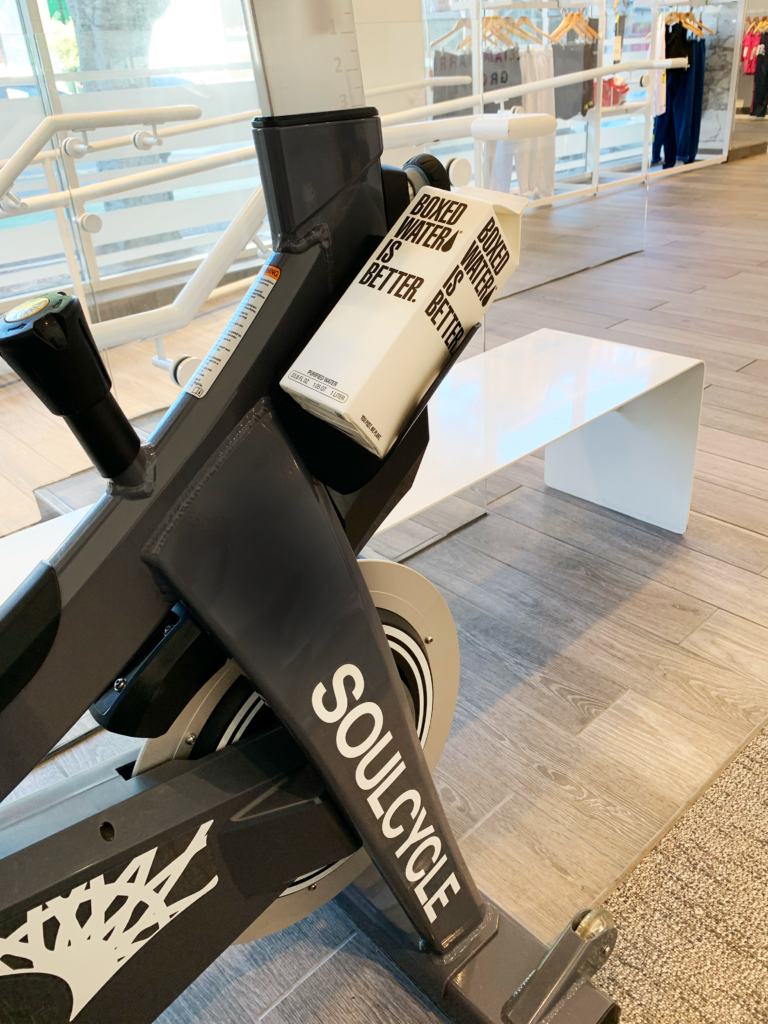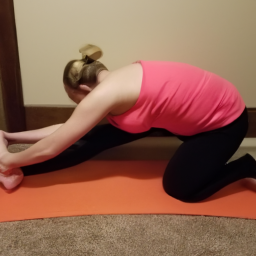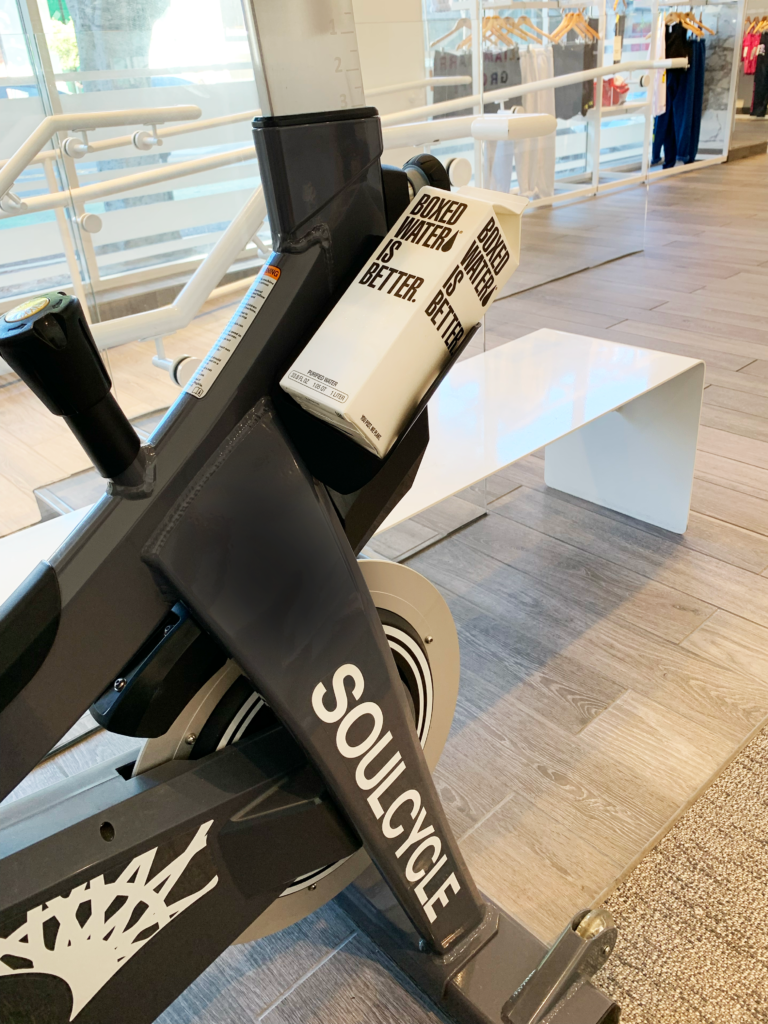In this article, you will discover the benefits of incorporating flexibility training into your workout routine. You will learn different stretches and exercises that can help improve your flexibility and prevent injuries. We will also discuss how to properly warm up before flexibility training and give tips on how to gradually increase your flexibility over time. By the end of this article, you will have all the tools you need to add flexibility training to your workouts and achieve a more balanced and effective fitness routine. Flexibility training is an essential component of any well-rounded fitness routine. By improving your range of motion, reducing muscle soreness, and enhancing athletic performance, flexibility training can help you achieve your fitness goals more effectively. In this article, we will explore the benefits of flexibility training, different types of stretching techniques, when to incorporate flexibility training, stretching techniques for different muscle groups, flexibility training tools and equipment, how to incorporate flexibility training into your workout routine, ways to progress in flexibility training, common mistakes to avoid, and the role of flexibility training in injury prevention. By following these guidelines, you can optimize your workouts and enhance your overall fitness.

Benefits of Flexibility Training
Flexibility training offers several benefits that can greatly improve your fitness journey. One of the most significant benefits is improved range of motion. By regularly stretching your muscles and joints, you can increase their flexibility, allowing you to move more freely. This increased range of motion is not only beneficial for daily activities but can also enhance your performance in various sports or physical activities.
Another advantage of flexibility training is reduced muscle soreness. When you engage in intense workouts, your muscles can become tight and prone to soreness. By incorporating flexibility training, you can help alleviate muscle soreness and promote faster recovery. Stretching after a workout can also help flush out lactic acid and promote blood flow to the muscles, leading to quicker recovery and reduced post-workout discomfort.
Flexibility training can also improve your athletic performance. When your muscles and joints are more flexible, you can move with increased efficiency and precision, enhancing your athletic abilities. Whether you are a runner, a weightlifter, or a yogi, flexibility training can help you perform better and reduce the risk of injury.
Types of Flexibility Training
There are several types of flexibility training techniques, each targeting different muscle groups and providing unique benefits. It is beneficial to incorporate a variety of stretching techniques into your routine to ensure a well-rounded flexibility training regimen.
Static Stretching
Static stretching involves holding a stretch position for an extended period. This technique allows your muscles to relax and lengthen, improving overall flexibility. Common static stretches include the standing quadriceps stretch, seated forward bend, and standing calf stretch. Static stretching is best performed after a workout or during a separate flexibility session.
Dynamic Stretching
Dynamic stretching involves controlled movements that mimic the activity you are about to engage in. Unlike static stretching, dynamic stretching involves continuous movement, which helps increase blood flow, warm up the muscles, and prepare them for the upcoming workout. Examples of dynamic stretches include arm swings, leg swings, and lunges with a twist. Dynamic stretching is particularly beneficial when incorporated before a workout.
PNF Stretching
PNF stretching, or proprioceptive neuromuscular facilitation stretching, is a technique that combines stretching and contracting muscles against resistance. It involves a series of contractions and relaxations to increase flexibility. PNF stretching is often performed with a partner or on your own using a towel or strap. This technique is highly effective in improving flexibility and is beneficial for both pre- and post-workout stretching routines.
When to Incorporate Flexibility Training
Flexibility training can be incorporated at different times during your workout routine, depending on your goals and preferences. Here are three common ways to incorporate flexibility training:
Pre-Workout
Performing flexibility exercises before your workout can help prepare your muscles for the upcoming activity. Dynamic stretching is particularly beneficial before a workout as it helps warm up the muscles and increase blood flow. Dynamic stretches can help activate the muscles you will be using during your workout and improve overall performance.
Post-Workout
Stretching after a workout can be an effective way to cool down and help your body recover. Static stretches performed after a workout can help reduce muscle soreness and promote muscle relaxation. Post-workout stretches can also improve flexibility gains and prevent muscle imbalances caused by repetitive movements during your workout.
Separate Flexibility Sessions
In addition to incorporating flexibility training before or after a workout, you can also dedicate separate sessions solely for flexibility training. These sessions can focus on specific muscle groups or general overall flexibility. Separate flexibility sessions can allow you to spend more time on stretches and target areas that may need extra attention.
Stretching Techniques for Different Muscle Groups
Different muscle groups require specific stretches to effectively improve flexibility. Here are some stretching techniques for different muscle groups:
Upper Body Stretches
To improve flexibility in your upper body, focus on stretches for the shoulders, chest, back, and arms. Some effective upper body stretches include shoulder circles, chest stretches, doorway stretches, and tricep stretches. These stretches can help alleviate tension in the upper body and improve range of motion for activities such as lifting, throwing, and reaching.
Lower Body Stretches
Stretching the lower body is crucial for maintaining good posture, preventing injuries, and improving overall mobility. Some effective lower body stretches include hamstring stretches, quadriceps stretches, hip flexor stretches, and calf stretches. These stretches can help improve flexibility in the legs and hips, allowing for better balance, stride length, and overall lower body function.
Core Stretches
Stretching the core is essential for maintaining a strong and stable body. Core stretches help improve posture, alleviate back pain, and enhance overall abdominal strength. Some effective core stretches include the cat-camel stretch, child’s pose, seated spinal twist, and standing side bend. These stretches can help improve flexibility in the spine, hips, and abdominal muscles, leading to improved balance and overall core stability.
Flexibility Training Tools and Equipment
While flexibility training can be done without any equipment, incorporating certain tools and equipment can enhance your stretching routine. Here are some commonly used tools and equipment for flexibility training:
Foam Rollers
Foam rollers are cylindrical tools that can be used for self-myofascial release. By applying pressure to specific areas of the body, foam rolling helps release tightness in muscles and fascia, promoting overall flexibility and reducing muscle soreness. Foam rollers are particularly effective for targeting large muscles like the thighs, calves, and back.
Resistance Bands
Resistance bands are versatile tools that can be used to enhance various stretching exercises. They provide resistance, allowing you to stretch muscles further and improve flexibility. Resistance bands are particularly useful for targeting smaller muscle groups and can be incorporated into both static and dynamic stretches.
Yoga Straps
Yoga straps are long straps that can assist with stretching and reaching difficult positions. They can be used to deepen a stretch or help with alignment during certain poses. Yoga straps are particularly beneficial for individuals with limited flexibility or those recovering from an injury.
Incorporating Flexibility Training into Your Workout Routine
To effectively incorporate flexibility training into your workout routine, consider the following factors:
Determining the Frequency
The frequency of flexibility training depends on your fitness goals and current flexibility level. Ideally, aim to incorporate flexibility training at least two to three times per week. If you are looking to improve flexibility rapidly, you may choose to dedicate more sessions to stretching. However, be mindful not to overtrain or push your body beyond its limits, as this can lead to injuries and setbacks.
Selecting Appropriate Stretches
When selecting stretches, consider the specific muscle groups you need to target and the movements you will be performing during your workout. Choose stretches that mimic these movements and focus on the major muscle groups involved. The stretches should be challenging enough to promote flexibility gains but not overly painful. Remember to listen to your body and adjust the intensity or duration of stretches accordingly.
Proper Warm-up and Cool-down
Before engaging in flexibility training, it is crucial to warm up your muscles and prepare them for stretching. A proper warm-up can include light cardio exercises such as jumping jacks, jogging, or cycling to increase body temperature and blood flow. After your flexibility training session, it is equally important to cool down and allow your body to recover. A cool-down can include gentle stretches and low-intensity exercises to gradually bring your heart rate down and prevent muscle stiffness.
Progressing in Flexibility Training
To continue making progress in your flexibility training, consider the following strategies:
Increasing Stretch Duration
As you become more comfortable with certain stretches, gradually increase the duration of each stretch. Aim to hold stretches for at least 30 seconds or longer, allowing your muscles to relax and lengthen further. Increasing the stretch duration can promote further gains in flexibility over time.
Gradually Increasing Intensity
To continue challenging your muscles and improving their flexibility, gradually increase the intensity of your stretches. This can be done by deepening the stretch, increasing the resistance, or adding variations to the stretch. However, be cautious not to exceed your limits or push through pain. Always work within a comfortable range of motion and consult with a professional trainer or physical therapist if you are unsure.
Adding Variety to Stretches
To prevent boredom and continue challenging your muscles, add variety to your stretching routine. Incorporate different stretches that target the same muscle groups or experiment with new stretching techniques. Adding variety can also help engage different muscle fibers and improve overall flexibility.
Common Mistakes to Avoid in Flexibility Training
To ensure an effective and safe flexibility training routine, it is essential to avoid these common mistakes:
Bouncing during Stretches
One common mistake in flexibility training is bouncing or using jerking movements while stretching. This can lead to muscle strains and injuries. Instead, focus on slow, controlled movements, and gradually increase the range of motion. Stretching should be gentle and comfortable, allowing your muscles to relax and lengthen naturally.
Neglecting Opposing Muscle Groups
Another mistake is neglecting opposing muscle groups. Your muscles work in pairs, and imbalances can lead to poor posture and increased risk of injury. Make sure to stretch both sides of a joint equally. For example, if you stretch your quadriceps, also stretch your hamstrings to maintain a balance between the front and back of your body.
Forgetting to Breathe
Proper breathing is essential during flexibility training. Many people hold their breath or take shallow breaths while stretching, which can lead to increased tension and limited effectiveness. Remember to breathe deeply and fully during each stretch, allowing oxygen to flow to your muscles and promoting relaxation.
Injury Prevention and Flexibility Training
In addition to its numerous fitness benefits, flexibility training plays a vital role in injury prevention. Here’s how flexibility training can help reduce the risk of injuries:
Reducing Risk of Muscle Strains
Regular flexibility training improves muscle flexibility and elasticity, reducing the risk of muscle strains. When muscles are more flexible, they can withstand sudden movements or changes in direction without excessive stress. By incorporating flexibility training into your routine, you can better prepare your muscles for the demands of physical activities, reducing the likelihood of strains and tears.
Improving Joint Health
Flexibility training helps maintain healthy joint mobility and prevents joint stiffness. Stretching exercises promote the lubrication of joints, reducing friction and maintaining their optimal function. Improved joint mobility not only enhances overall performance but also minimizes the risk of joint-related injuries, such as sprains or dislocations.
Enhancing Overall Body Mobility
Flexibility training significantly contributes to overall body mobility. By improving flexibility in muscles and joints, you can move more freely and efficiently. This increased mobility allows for better body alignment, improved posture, and enhanced performance in both sports and daily activities. Flexibility training can also help alleviate joint and muscle tightness commonly associated with sedentary lifestyles.
Conclusion
Incorporating flexibility training into your workout routine can offer numerous benefits and enhance your overall fitness. By understanding the different types of flexibility training, when to incorporate it, and how to progress, you can optimize your workouts and reduce the risk of injury. Remember to listen to your body and consult with a professional trainer or physical therapist for personalized guidance. So, start incorporating flexibility training into your routine today and enjoy the improved range of motion, reduced muscle soreness, and enhanced athletic performance it can bring.




